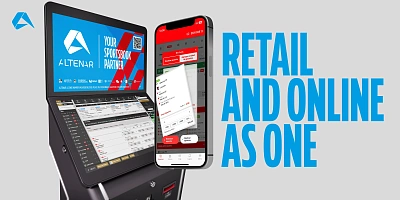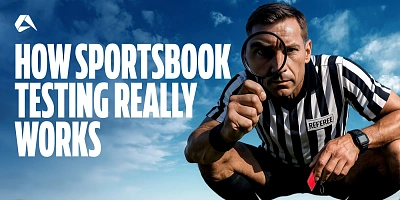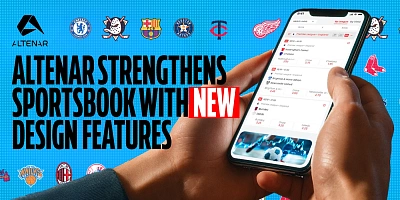Success in a sportsbook comes from clarity - not guesswork. As every successful sportsbook understands, knowing what to track, how to interpret the data, and when to act is frequently the difference that makes the difference.
In a previous article, ‘Metrics that Matter in 2024’, we identified the key KPIs for boosting sportsbook revenue, but understanding the metrics is only half the battle. Building upon this article, this guide goes beyond definitions. It’s a practical playbook showing how to track, calculate, and use data to optimise performance.
If you want to outperform the competition, data is your most valuable asset. Let’s break it down and turn insights into action.
KPI Roadmap to Success
The following table lays out a clear roadmap for sportsbook operators, showing exactly what to track, why it matters, and the benchmarks for profitability.
| Step | Objective | Minimum Requirement for Profitability |
|---|---|---|
| 1. Establish a Financial Performance Baseline | Measure key revenue metrics such as GGR, NGR, and ARPU to assess profitability. | GGR and NGR should be positive and growing, ARPU should align with industry benchmarks. |
| 2. Analyse Customer Acquisition & Retention | Evaluate CAC, CLV, and churn rate to determine the effectiveness of acquisition and retention strategies. | CLV must be greater than CAC. The churn rate should be below 20% for sustainable growth. |
| 3. Evaluate Engagement & Player Activity | Track active players, bet frequency, and in-play bet share to understand user behaviour. | Bet frequency should increase over time, and in-play betting should represent a growing share of total bets. |
| 4. Assess Brand Visibility & User Sentiment | Monitor social media engagement, app store ratings, and brand sentiment to gauge reputation and visibility. | App ratings should be at least 4.0, and social engagement should show positive sentiment. |
| 5. Optimise Operational Efficiency | Analyse support resolution time and payment processing speed to improve service efficiency. | Support resolution time under 24 hours and payment processing within minutes to retain players. |
| 6. Benchmark Performance Against Industry Standards | Compare internal KPIs against industry benchmarks to identify strengths and weaknesses. | KPIs should match or exceed industry benchmarks for market-leading performance. |
| 7. Implement Data-Driven Strategy Adjustments | Use insights from KPIs to adjust marketing, promotions, UX, and operational strategies. | Marketing ROI should be positive. User experience should drive engagement and retention. |
| 8. Continuously Monitor & Refine KPIs | Set up automated tracking and conduct regular reviews to ensure sustained growth. | Continuous tracking and KPI improvement to maintain long-term profitability. |
Success in the sportsbook industry isn’t achieved by chance. It's built on measurable, trackable, and actionable data. Our roadmap to success table above provides a structured approach, helping operators identify where they stand and what needs improvement.
But knowing the steps isn’t enough. The key is understanding the right KPIs to use and when.
Each stage of the roadmap aligns with a core KPI category, giving operators a clear and straightforward way to measure progress.
Core KPI Categories
-
Financial Performance: Measures revenue, profitability, and cost efficiency.
-
Customer Acquisition & Retention: Tracks player acquisition, retention, and marketing efficiency.
-
Engagement & Player Activity: Evaluates betting behaviour, user interaction, and platform usage.
-
Brand Visibility & User Sentiment: Assesses reputation, social presence, and player perception.
-
Operational Efficiency. Monitors customer support, payment processing, and platform reliability.
From Insight to Action: The KPIs That Define Success
Let’s examine each category more closely, exploring the essential KPIs, how to measure them, and what targets operators should aim for to drive long-term success.
1. Financial Performance KPIs
Measures: Profitability
How much money is the sportsbook making, and how efficiently?
Financial Performance KPIs track revenue generation and cost efficiency, helping operators determine profitability and identify areas for improvement. These metrics reveal whether a sportsbook is financially sustainable or needs operational adjustments.
Key Metrics
-
Gross Gaming Revenue (GGR) = Total Bets - Total Payouts
-
The sportsbook’s base income before costs.
-
Example: If players wager £1M and win £900K, GGR = £100K.
-
Net Gaming Revenue (NGR) = GGR - Bonuses - Fees - Taxes
-
The actual profit after promotional and operational deductions.
-
Example: If £20K is spent on bonuses and fees, NGR = £80K.
-
Average Revenue Per User (ARPU) = Total Revenue / Active Users
-
Measures how much each active player contributes to revenue.
-
Example: With 2,000 active users, an NGR of £80K means ARPU = £40.
Interpretation of Metrics
-
GGR vs. NGR: What’s the Difference?
-
GGR looks impressive but doesn’t account for expenses.
-
NGR is the real profitability indicator, showing what’s left after promotions, fees, and taxes.
-
Why ARPU Matters
-
A high ARPU but declining user base suggests over-reliance on VIP players.
-
A low ARPU but steady growth may indicate wide user appeal but low spending per player.
Industry Benchmarks & Key Takeaways
✔ Benchmark Data
-
In 2025, NGR margins typically range between 5% and 10% of the total handle, depending on the market.
✔ Good vs. Bad Indicators
-
High GGR but low NGR? This is likely caused by excessive bonuses or rising operational costs.
-
Strong ARPU but fewer active players? Your sportsbook may be too dependent on VIPs instead of a broad player base.
✔ Actionable Fixes
-
Refine bonus strategies to prevent excessive promotional costs.
-
Optimise operational spending by analysing fees, taxation, and payment provider costs.
-
Diversify player acquisition to ensure sustainable long-term revenue, not just reliance on high-stakes bettors.
2. Customer Acquisition & Retention KPIs: Understanding Player Value
Measures: Player Value
Are you acquiring players efficiently, and are they staying loyal?
These KPIs shed light on the efficiency of marketing efforts and the long-term value derived from each player.
Key Metrics
-
Customer Acquisition Cost (CAC) = Total Marketing Spend / New Customers
-
The average expense incurred to attract a new player.
-
Example: If £50,000 is spent on marketing in a month and 500 new players are acquired, CAC = £100 per player.
-
Customer Lifetime Value (CLV) = (ARPU × Average Player Lifespan) - CAC
-
The projected revenue a player generates over their active period minus acquisition costs.
-
Example: With an ARPU of £40, an average player lifespan of 2 years, and a CAC of £100, CLV = (£40 × 24 months) - £100 = £860.
-
Churn Rate = (Lost Customers in a Period / Total Customers at Start of Period) × 100
-
The percentage of players who stop engaging with the platform over a specific timeframe.
-
Example: If 200 players leave out of 2,000 at the start of the month, Churn Rate = (200 / 2,000) × 100 = 10%.
Interpretation of Metrics
-
Balancing CAC and CLV. A sustainable model requires that CLV significantly exceeds CAC. A standard benchmark is a CLV:CAC ratio of 3:1, which indicates that for every £1 spent on acquisition, £3 is earned over the player's lifetime.
-
Understanding Churn Rate. A high churn rate can negate acquisition efforts. Monitoring this metric helps identify retention issues and areas needing improvement.
Industry Benchmarks & Key Takeaways
✔ Benchmark Data
-
In the iGaming sector, a CLV:CAC ratio of 3:1 is considered healthy, suggesting efficient acquisition and retention strategies.
✔ Good vs. Bad Indicators
-
CLV > CAC = Profitable growth.
-
High churn despite strong acquisition = Indicates potential retention problems.
✔ Actionable Fixes
-
Implement personalised onboarding experiences and regular engagement initiatives to increase player retention.
-
Focus on channels with the highest conversion rates to reduce CAC.
-
Regularly collect and act upon player feedback to improve satisfaction and reduce churn.
3. Engagement & Player Activity KPIs
Measures: User Interaction
Are players engaged, and how are they interacting?
These KPIs provide insights into betting behaviours and platform interaction levels.
Key Metrics
-
Bet Frequency = Total Bets / Active Users
-
Average number of bets placed by each active user.
-
Example: If 10,000 bets are placed by 500 active users, Bet Frequency = 20 bets per user.
-
In-Play Bet Share = (In-Play Bets / Total Bets) × 100
-
Percentage of bets placed on live events.
-
Example: With 4,000 in-play bets out of 10,000 total bets, In-Play Bet Share = (4,000 / 10,000) × 100 = 40%.
-
Hold Percentage = (Total Revenue / Total Handle) × 100
-
The proportion of wagered money retained as revenue.
-
Example: If total revenue is £50,000 from a handle of £1,000,000, Hold Percentage = (£50,000 / £1,000,000) × 100 = 5%.
Interpretation of Metrics
-
Monitoring Bet Frequency and In-Play Bet Share reveals user preferences, aiding in tailoring offerings to boost engagement.
-
In-play betting popularity varies by region; understanding this helps in localising content and promotions effectively.
-
A stable Hold Percentage indicates balanced odds and effective risk management for long-term profitability.
Industry Benchmarks & Key Takeaways
✔ Benchmark Data
-
A Hold Percentage between 5% and 7% is typical in the industry, reflecting balanced profitability.
✔ Good vs. Bad Indicators
-
High In-Play Bet Share but Low Hold Percentage = May suggest overly generous live odds or inadequate in-play risk management.
-
Increasing Bet Frequency but Declining ARPU = Could indicate frequent low-stake betting without substantial revenue growth.
✔ Actionable Fixes
-
Regularly review and adjust live betting odds to maintain a healthy Hold Percentage.
-
Introduce features like live streaming and timely notifications to encourage higher bet frequency and value.
-
Offer targeted bonuses to active users to boost ARPU and foster loyalty.
4. Social Media & App Store Metrics
Measures: Brand Visibility & User Sentiment
How is the sportsbook perceived in the digital space?
These KPIs highlight brand awareness, customer satisfaction, and potential friction points in the user experience.
Key Metrics
-
App Download Rate = Total Downloads / Time Period
-
Measures how often the app is downloaded within a specific timeframe.
-
Example: If an app is downloaded 10,000 times in a month, Its Download Rate is 10,000 downloads/month.
-
App Retention Rate = (Users Still Active After X Days / Total Installs) × 100
-
The percentage of users who continue using the app after installation.
-
Example: If 1,000 users remain active after 30 days out of 10,000 total installs, the Retention Rate = 10%.
-
Average App Rating = Aggregate Score from App Stores (Google Play, Apple App Store)
-
A numerical representation of user satisfaction based on app store reviews.
-
Example: An average rating of 4.5 stars indicates a well-received app with positive user experiences.
-
Social Engagement Rate = (Total Interactions / Followers) × 100
-
The level of user interaction on social platforms, including likes, shares, and comments.
-
Example: If an operator has 500 interactions from 5,000 followers, the Engagement Rate = 10%.
-
Brand Sentiment Score = AI-driven sentiment analysis of social media & reviews
-
Measures public perception of the sportsbook by analysing user feedback and sentiment trends.
-
Example: A positive sentiment score of 80% suggests a favourable brand reputation.
Interpretation of Metrics
-
App Downloads vs. Retention: A high number of downloads doesn’t guarantee success. A low retention rate suggests onboarding, usability, or player incentives issues.
-
Impact of App Ratings on New Player Acquisition: Players often rely on app store reviews before downloading a sportsbook app. Maintaining a rating above 4.0 stars helps attract and retain users.
-
Social Engagement as a Brand Indicator: High engagement rates indicate strong brand awareness, but marketing strategies may need refinement if conversion rates are low.
Industry Benchmarks & Key Takeaways
✔ Benchmark Data
-
A 30-day retention rate of 10% or higher is considered strong in the iGaming industry.
-
For a healthy brand presence, aim for app ratings above 4.0 stars and social media engagement rates of 5-10%.
✔ Good vs. Bad Indicators
-
High downloads but low retention: Poor onboarding or weak player incentives.
-
Positive social engagement but low conversion: Marketing efforts not translating into app registrations or bets.
-
Low app store ratings: Possible technical issues, slow withdrawals, or subpar customer support.
✔ Actionable Fixes
-
Enhance onboarding: A clear, rewarding welcome journey boosts retention.
-
Address negative reviews: Promptly resolving complaints improves app store ratings.
-
Optimise social media calls to action: Converting engagement into active users requires strategic content and incentives.
5. Operational Efficiency KPIs:
Measures: Business Performance
How well is the sportsbook running behind the scenes?
Operational Efficiency KPIs assess a sportsbook's internal processes, focusing on customer support and payment systems. Efficient operations enhance user satisfaction and loyalty, directly impacting profitability.
Key Metrics
-
Support Ticket Resolution Time = Average Time to Close Customer Queries
-
Measures the average duration taken to resolve customer support issues.
-
Example: If the support team resolves 100 tickets in a total of 6,300 minutes, the average resolution time is 63 minutes per ticket.
-
Payment Processing Speed = Average Time to Deposit/Withdraw
-
The average time required to process player deposits and withdrawals.
-
Example: Top UK bookmakers offer withdrawal processing times within 24 hours using e-wallets or cryptocurrencies.
Interpretation of Metrics
-
Prolonged resolution times can lead to player dissatisfaction increasing churn rates. Monitoring this metric helps identify bottlenecks in customer service.
-
Fast deposit and withdrawal processes enhance player trust and loyalty. Delays, especially in withdrawals, can frustrate players and deter future engagement.
-
Pinpoint areas where delays occur, enabling targeted process improvements and resource allocation.
Industry Benchmarks & Key Takeaways
✔ Benchmark Data
-
Aim for support ticket resolution times averaging around 63 minutes per ticket.
-
Withdrawal processing times within 24 hours are considered competitive in the UK market.
✔ Good vs. Bad Indicators
-
Slow withdrawal times = Lead to player frustration and increased churn.
-
High support resolution times - Indicates potential inefficiencies in customer service, risking player loss.
✔ Actionable Fixes
-
Optimise Customer Support: Implement advanced help desk tools and continuous agent training to boost efficiency and service quality.
-
Enhance Payment Processing: Adopt real-time payment solutions to expedite transactions, improving player satisfaction.
-
Utilise Automation: Incorporate AI-driven tools to streamline repetitive tasks, reducing operational delays and errors.
Scenario Analysis - Making Sense of KPI Trends
What are the Numbers Telling You?
Identifying conflicts between KPIs helps operators diagnose inefficiencies and refine strategy. This table highlights common sportsbook challenges, what they indicate, and actionable solutions for sustainable growth.
| Scenario | What’s Happening? | How to Fix It |
|---|---|---|
| GGR is increasing, but ARPU is dropping | More users are placing bets, but the average spend per player is decreasing. | Analyse player segments to identify low-value bettors. Introduce targeted promotions for high-value players and adjust odds or bet limits to boost ARPU. |
| High CAC but low retention | Acquiring players is expensive, yet they are leaving quickly. | Improve onboarding, offer personalised promotions, and introduce engagement incentives such as loyalty rewards or free bets. |
| High bet frequency but declining hold percentage | Players are betting often, but the sportsbook’s profit margin per bet is shrinking. | Review pricing strategies, optimise odds margins, and refine risk management to ensure a healthy hold percentage. |
| In-play bet share is rising, but overall revenue is stagnating | More players are engaging in live betting, yet revenue growth remains flat. | Adjust in-play odds and betting options to increase margins while ensuring competitive pricing. Offer cross-promotions between pre-match and in-play markets. |
| Low churn but stagnant revenue growth | Players are staying active, but their spending isn't increasing. | Implement targeted retention strategies that encourage higher bet values and cross-sell new betting markets. |
| App download rate is high, but the activation rate is low | Many users download the app but don’t proceed to deposit or place bets. | Improve onboarding UX, streamline registration, and offer first-time deposit incentives to encourage engagement. |
| Strong social media engagement but low conversion rates | The brand gets high interaction online, but few users sign up or deposit. | Optimise call-to-action strategies in social media campaigns, ensure clear value propositions and refine conversion funnels. |
| Withdrawal requests are rising, but deposit growth is slowing | Players are cashing out more often, yet fewer funds are being deposited. | Review payout speed, assess bonus structures, and introduce deposit-match incentives to encourage reinvestment. |
| High bonus redemptions but low subsequent deposits | Players claim promotional offers but don’t continue betting. | Refine bonus conditions to promote continued play and introduce tiered reward structures that incentivise long-term activity. |
| Support ticket resolution time is high, but player satisfaction scores are steady. | Customer issues take longer to resolve, yet user feedback remains neutral or positive. | Prioritise efficiency improvements but ensure service quality isn't sacrificed. Use AI chatbots for routine inquiries to reduce the ticket backlog. |
| Technical uptime is stable, but peak-hour betting volume is dropping | No major outages, but fewer bets are placed during peak hours. | Identify friction points in the UX, assess if load times or transaction speeds are slowing engagement, and optimise app performance. |
| NGR is growing, but marketing ROI is falling | Net Gaming Revenue is increasing, yet marketing spend efficiency is declining. | Reassess marketing budget allocation, focus on high-converting channels, and refine audience segmentation for better targeting. |
Red Flags & Warning Signs:
When KPIs Indicate Trouble Ahead
Not all performance indicators carry the same weight, and some signal immediate concerns that demand urgent action. Below are seven major red flags that indicate potential risks for sportsbooks.
Recognising these early allows operators to adjust strategy before losses escalate.
1. High Customer Acquisition Cost (CAC) with Low Customer Lifetime Value (CLV)
Spending heavily on acquiring players but failing to retain them means marketing efforts are inefficient. Operators should refine targeting, improve onboarding, and introduce loyalty incentives to increase long-term value while lowering acquisition costs.
2. Increasing Bet Frequency but Declining Hold Percentage
Players are placing more bets, but the sportsbook's profit margins are shrinking. This suggests odds may be mispriced or promotions are cutting into revenue. A review of pricing strategies and risk management is necessary.
3. Rising Withdrawal Requests with Sluggish Deposit Growth
A spike in withdrawals without matching deposit increases could indicate bonus exploitation, player dissatisfaction, or cashing out to competitors. Assess withdrawal patterns, strengthen retention incentives, and offer deposit-based rewards to maintain balance.
4. High Bonus Redemptions but Low Post-Bonus Activity
If players claim bonuses but don’t continue betting, bonus structures may be too generous or lack strategic value. Operators should revise bonus conditions to encourage sustained engagement rather than one-time cashouts.
5. Low App Retention Despite High Download Rates
Strong download numbers but few active users signal friction in onboarding, UX issues, or lack of compelling early engagement features. Improve onboarding flow, streamline registration, and personalise first-time user incentives.
6. Increasing Churn Rate Among High-Value Players
Losing VIPs or frequent bettors is a major warning sign of service dissatisfaction, competitor poaching, or poor retention efforts. Personalised outreach, enhanced customer support, and targeted rewards can rebuild loyalty and engagement.
7. Declining Social Engagement & Negative Sentiment Trends
A drop in brand interactions or increasing negative sentiment suggests reputation issues, unaddressed complaints, or ineffective marketing efforts. Regularly monitor social feedback, resolve concerns quickly, and refine content strategy to improve public perception.
Benchmarking & Industry Standards: What’s Considered "Good"?
KPIs don’t exist in a vacuum. That’s to say that a metric that signals success for one sportsbook may be irrelevant or unrealistic for another. For this reason, benchmarking against industry standards is necessary, giving operators a clear picture of where they stand and what’s achievable based on their market, business stage, and goals.
However, defining these targets isn’t a one-size-fits-all process. KPI benchmarks shift depending on regional regulations, market maturity, and the sportsbook’s strategic objectives. In other words, what’s realistic for a startup in an emerging market won’t necessarily align with an established operator in a highly regulated jurisdiction.
Why KPI Targets Vary by Region
Not all markets play by the same rules. Compliance costs, taxation, and advertising restrictions shape profitability benchmarks in regulated markets, forcing operators to focus on high-margin retention strategies rather than aggressive player acquisition. In contrast, emerging markets present rapid expansion opportunities but come with operational hurdles like unstable payment infrastructure, legal uncertainties, and high player turnover. What works in one jurisdiction won’t necessarily work in another.
Startups vs. Established Operators
The stage of a sportsbook’s growth determines which KPIs matter most. A new sportsbook, for instance, needs to prove itself, so its KPIs may be inclined to focus on acquisition, app downloads, and brand awareness. Customer Lifetime Value (CLV) and Churn Rate take a backseat when the priority is growing the user base quickly.
On the other hand, established operators shift their focus to retention, operational efficiency, and long-term profitability. Their KPIs look different because their goals are different.
Setting KPI Targets That Align With Business Goals
The best benchmarks are not typically taken from competitor reports. They’re built around business objectives. Operators should ask: Are we focused on rapid expansion, market consolidation, or maximising profitability? The answer determines which KPIs take priority. A sportsbook looking to expand in a saturated market might track Cost Per Acquisition (CPA) vs. CLV, while one optimising an existing player base would likely prioritise Deposit Frequency and ARPU (Average Revenue Per User).
Implementing Data-Driven Strategy Adjustments
A data-driven strategy is more than collecting numbers. It’s about gathering insights and using them to make informed, strategic decisions that drive long-term success. Considering this, operators should focus on trends rather than isolated fluctuations, ensuring that changes are measured and intentional rather than reactive.
The first step is establishing a clear framework for tracking and analysing data. KPIs should be reviewed in relation to each other since no metric exists in isolation. For instance, a rise in acquisition means little if retention is falling, and strong engagement is meaningless if revenue per user is declining. Understanding these connections allows operators to make balanced adjustments rather than chasing short-term gains.
Further to this, regular performance reviews and structured A/B testing are essential for refining strategies. Small, controlled changes, whether in marketing spend, promotions, or platform design, should be continuously evaluated to assess their impact.
Ultimately, the most successful operators don’t just track data but use it to guide every decision. A well-implemented data-driven strategy creates an adaptive, efficient sportsbook built for sustainable profitability.
Making KPIs Work for Your Sportsbook in 2025
To optimise the full potential of Key Performance Indicators (KPIs), sportsbook operators should adopt a coordinated approach:
-
Continuous Monitoring: Regular tracking of KPIs is essential to identify trends and make informed decisions promptly.
-
Automated Tracking Systems: The implementation of automated tools, where possible, streamlines data collection and analysis, reducing manual errors and ensuring real-time insights.
-
Regular Performance Reviews: Schedule periodic evaluations to assess KPI outcomes, allowing for timely strategy adjustments.
Actionable Steps for Operators
-
Identify Relevant KPIs: Determine which metrics align with your business objectives.
-
Set Clear Targets: Establish measurable goals for each KPI to provide direction and benchmarks for success.
-
Invest in Technology: Utilise advanced analytics platforms to automate data tracking and reporting.
-
Train Your Team: Ensure staff are proficient in using data tools and interpreting KPI reports.
-
Encourage a Data-Driven Culture: Promote decision-making based on data insights across all levels of the organisation.
Eliminating the Guesswork
Tracking KPIs is only the beginning. Lasting success comes from turning raw data into action. Altenar’s advanced iGaming technology provides real-time reports and automated insights that help you spot opportunities and risks instantly.
Book a personalised demonstration today and take the guesswork out of your sportsbook management.













